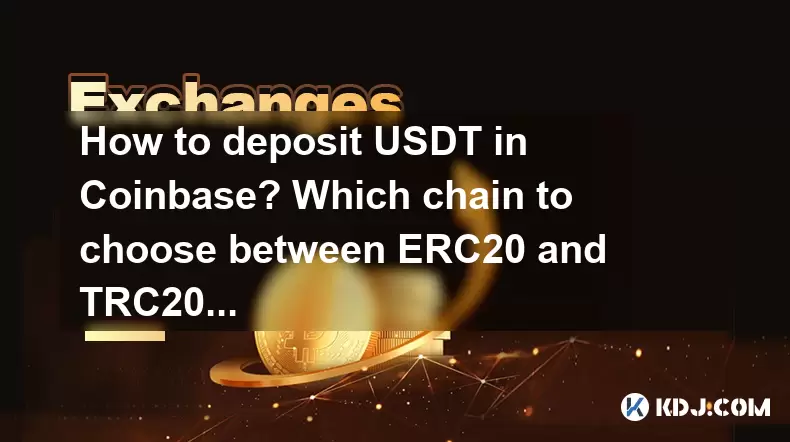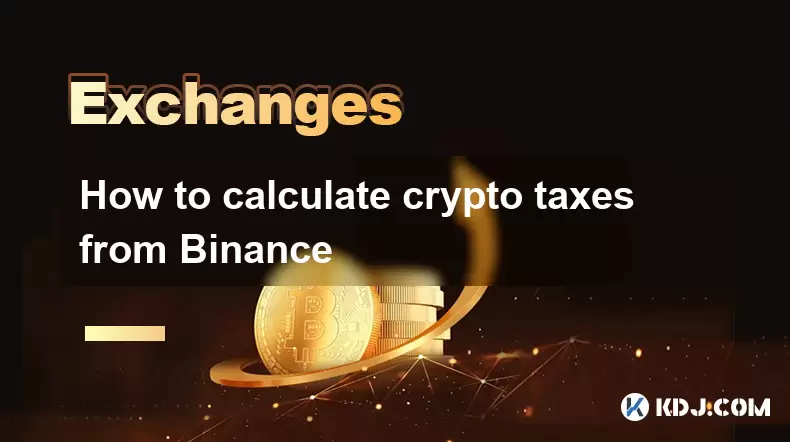-
 Bitcoin
Bitcoin $117500
2.15% -
 Ethereum
Ethereum $3911
6.19% -
 XRP
XRP $3.316
10.79% -
 Tether USDt
Tether USDt $1.000
0.01% -
 BNB
BNB $787.2
2.24% -
 Solana
Solana $175.2
4.15% -
 USDC
USDC $0.9999
0.00% -
 Dogecoin
Dogecoin $0.2225
8.40% -
 TRON
TRON $0.3383
0.28% -
 Cardano
Cardano $0.7868
6.02% -
 Stellar
Stellar $0.4382
9.34% -
 Hyperliquid
Hyperliquid $40.92
7.56% -
 Sui
Sui $3.764
7.63% -
 Chainlink
Chainlink $18.48
10.66% -
 Bitcoin Cash
Bitcoin Cash $582.1
1.88% -
 Hedera
Hedera $0.2601
6.30% -
 Avalanche
Avalanche $23.33
4.94% -
 Ethena USDe
Ethena USDe $1.001
0.02% -
 Litecoin
Litecoin $122.3
2.04% -
 UNUS SED LEO
UNUS SED LEO $8.969
-0.27% -
 Toncoin
Toncoin $3.339
0.86% -
 Shiba Inu
Shiba Inu $0.00001287
4.30% -
 Uniswap
Uniswap $10.43
7.38% -
 Polkadot
Polkadot $3.861
5.08% -
 Dai
Dai $1.000
0.02% -
 Bitget Token
Bitget Token $4.513
3.41% -
 Monero
Monero $267.7
-6.18% -
 Cronos
Cronos $0.1499
4.14% -
 Pepe
Pepe $0.00001110
5.15% -
 Aave
Aave $284.9
8.28%
How to deposit USDT in Coinbase? Which chain to choose between ERC20 and TRC20?
To deposit USDT on Coinbase, choose between ERC20 for security and higher fees, or TRC20 for lower costs and faster times, then follow the platform's step-by-step guide.
May 17, 2025 at 05:14 pm

Depositing USDT in Coinbase is a straightforward process that requires you to understand the different blockchain networks available for this stablecoin. In this article, we will guide you through the steps to deposit USDT into your Coinbase account, and we will also discuss the differences between the ERC20 and TRC20 networks to help you choose the most suitable option for your needs.
Preparing to Deposit USDT in Coinbase
Before you start the process of depositing USDT into your Coinbase account, there are a few preparations you need to make. First, ensure that you have a Coinbase account. If you do not have one, you will need to sign up and complete the necessary identity verification processes. Once your account is set up and verified, you can proceed with the deposit.
Second, you need to have USDT available in a wallet that supports the network you intend to use. This could be either an ERC20 or TRC20 network, depending on your preference. Make sure you have enough USDT to cover the deposit amount you want to make, as well as any network fees that might be associated with the transaction.
Choosing Between ERC20 and TRC20
When deciding between ERC20 and TRC20 for depositing USDT into Coinbase, it's important to understand the key differences between these two networks.
ERC20 is a token standard on the Ethereum blockchain. It is widely used and has high liquidity. However, transactions on the Ethereum network can be more expensive due to higher gas fees, especially during periods of network congestion. If you prioritize security and are willing to pay higher fees for faster transaction confirmation, ERC20 might be the better choice.
TRC20, on the other hand, is a token standard on the Tron blockchain. It is known for its lower transaction fees and faster transaction times compared to ERC20. If you are looking to minimize costs and can tolerate slightly longer confirmation times, TRC20 could be more suitable.
Step-by-Step Guide to Depositing USDT on Coinbase
Now that you understand the basics, let's go through the steps to deposit USDT into your Coinbase account.
- Log in to your Coinbase account. Navigate to the Coinbase website or open the Coinbase app on your mobile device and enter your login credentials.
- Navigate to the 'Assets' tab. Once logged in, you will see a list of your assets. Click on 'Assets' to view all the cryptocurrencies supported by Coinbase.
- Select USDT. Scroll through the list of assets until you find USDT. Click on it to open the USDT page.
- Choose the network. On the USDT page, you will see options to deposit USDT via different networks. Select either ERC20 or TRC20 based on your preference.
- Generate a deposit address. Click on the 'Deposit' button, and Coinbase will generate a unique deposit address for you. This address will be specific to the network you selected (ERC20 or TRC20).
- Copy the deposit address. Make sure to copy the entire address accurately. Any mistake in the address could result in the loss of your funds.
- Initiate the transfer from your external wallet. Open the wallet where your USDT is stored. Select the option to send USDT, and paste the Coinbase deposit address into the recipient field. Ensure that you select the correct network (ERC20 or TRC20) in your wallet to match the one you chose on Coinbase.
- Enter the amount and confirm the transaction. Specify the amount of USDT you want to deposit and review the transaction details, including any network fees. Once you are satisfied, confirm the transaction.
- Wait for the transaction to be confirmed. Depending on the network you chose, it may take some time for the transaction to be confirmed on the blockchain. Once confirmed, the USDT will appear in your Coinbase account.
Monitoring Your Deposit
After initiating the deposit, it's important to monitor the transaction to ensure it goes through successfully. You can check the status of your deposit on Coinbase by going to the 'Transactions' tab and looking for the specific USDT deposit. Additionally, you can use a blockchain explorer to track the transaction on the Ethereum or Tron network, depending on which one you used.
If you encounter any issues with the deposit, such as delays or errors, contact Coinbase support for assistance. They can help you resolve any problems and ensure that your funds are credited to your account.
Understanding Network Fees and Confirmation Times
When depositing USDT into Coinbase, it's crucial to understand the network fees and confirmation times associated with each network.
For ERC20 transactions, the network fee is known as the gas fee. This fee can vary significantly based on the current demand for transactions on the Ethereum network. During peak times, gas fees can be quite high, which is something to consider when choosing this network. The confirmation time for ERC20 transactions typically ranges from a few minutes to an hour, depending on the network congestion.
For TRC20 transactions, the network fee is generally much lower than ERC20. This makes TRC20 a more cost-effective option for many users. The confirmation time for TRC20 transactions is usually faster, often taking just a few minutes to complete.
Frequently Asked Questions
Q: Can I deposit USDT from any wallet to Coinbase?
A: Yes, you can deposit USDT from any wallet that supports the ERC20 or TRC20 network. Just ensure that you select the correct network on both your wallet and Coinbase to avoid any issues.
Q: What happens if I send USDT to the wrong network on Coinbase?
A: If you send USDT to the wrong network, the transaction may fail, and you could lose your funds. Always double-check the network selection before confirming the transaction.
Q: How long does it take for USDT to appear in my Coinbase account after depositing?
A: The time it takes for USDT to appear in your Coinbase account depends on the network you used. ERC20 transactions may take a few minutes to an hour, while TRC20 transactions usually take just a few minutes.
Q: Can I deposit other stablecoins into Coinbase using the same method?
A: Yes, Coinbase supports deposits of other stablecoins like USDC and DAI. The process is similar, but you will need to select the appropriate asset and network when depositing.
Disclaimer:info@kdj.com
The information provided is not trading advice. kdj.com does not assume any responsibility for any investments made based on the information provided in this article. Cryptocurrencies are highly volatile and it is highly recommended that you invest with caution after thorough research!
If you believe that the content used on this website infringes your copyright, please contact us immediately (info@kdj.com) and we will delete it promptly.
- Tron's Sell-Off Spurs Altcoin Shift: What's Next for TRX?
- 2025-08-08 08:30:12
- RUVI Presale: Is the Growth Potential Real?
- 2025-08-08 09:10:12
- Sleep Token's US Takeover: Thornhill Rides the 'Even In Arcadia' Wave
- 2025-08-08 08:30:12
- FTT Token's Wild Ride: Creditor Repayments vs. Market Drop - A New Yorker's Take
- 2025-08-08 07:10:12
- Floki Crypto Price Prediction: Riding the Robinhood Rocket or Just a Meme?
- 2025-08-08 07:15:12
- EigenLayer, Restaking, and Ethereum: Navigating the Hype and the Hazards
- 2025-08-08 06:30:12
Related knowledge

How to use margin trading on Poloniex
Aug 08,2025 at 09:50am
Understanding Margin Trading on Poloniex

How to use advanced trading on Gemini
Aug 08,2025 at 04:07am
Understanding Advanced Trading on GeminiAdvanced trading on Gemini refers to a suite of tools and order types designed for experienced traders who wan...

How to deposit USD on Bitstamp
Aug 07,2025 at 05:18pm
Understanding Bitstamp and USD DepositsBitstamp is one of the longest-standing cryptocurrency exchanges in the industry, offering users the ability to...

How to use the Kraken Pro interface
Aug 08,2025 at 09:57am
Understanding the Kraken Pro Interface LayoutThe Kraken Pro interface is designed for both novice and experienced traders seeking a streamlined experi...

How to find my transaction ID on Gemini
Aug 08,2025 at 12:50am
Understanding the Transaction ID in Cryptocurrency ExchangesA transaction ID (TXID) is a unique alphanumeric string that identifies a specific transfe...

How to calculate crypto taxes from Binance
Aug 08,2025 at 07:56am
Understanding Cryptocurrency Taxation on BinanceCalculating crypto taxes from Binance requires a clear understanding of how tax authorities classify d...

How to use margin trading on Poloniex
Aug 08,2025 at 09:50am
Understanding Margin Trading on Poloniex

How to use advanced trading on Gemini
Aug 08,2025 at 04:07am
Understanding Advanced Trading on GeminiAdvanced trading on Gemini refers to a suite of tools and order types designed for experienced traders who wan...

How to deposit USD on Bitstamp
Aug 07,2025 at 05:18pm
Understanding Bitstamp and USD DepositsBitstamp is one of the longest-standing cryptocurrency exchanges in the industry, offering users the ability to...

How to use the Kraken Pro interface
Aug 08,2025 at 09:57am
Understanding the Kraken Pro Interface LayoutThe Kraken Pro interface is designed for both novice and experienced traders seeking a streamlined experi...

How to find my transaction ID on Gemini
Aug 08,2025 at 12:50am
Understanding the Transaction ID in Cryptocurrency ExchangesA transaction ID (TXID) is a unique alphanumeric string that identifies a specific transfe...

How to calculate crypto taxes from Binance
Aug 08,2025 at 07:56am
Understanding Cryptocurrency Taxation on BinanceCalculating crypto taxes from Binance requires a clear understanding of how tax authorities classify d...
See all articles

























































































